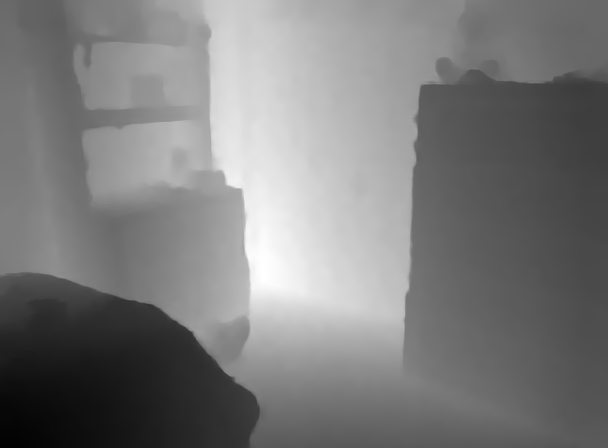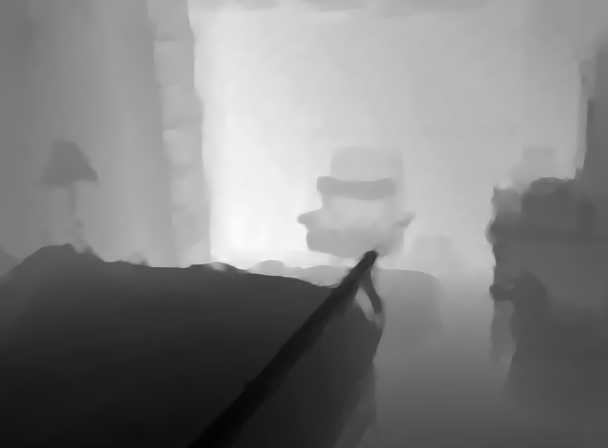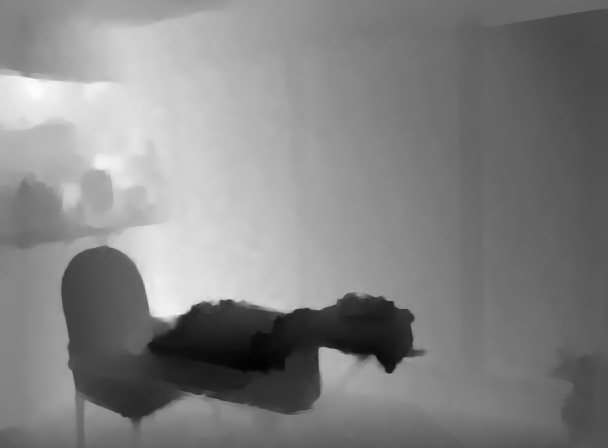- Python = 3.8
- PyTorch = 1.5
- TensorBoard
- numpy
- os
- cv2
- PIL
- glob
- logging
I trained and tested the model on a single NVIDIA RTX 2080Ti GPU. The training strategies are same as the paper.
- Command
#x4
python train.py --upscaling_factor 4
#x8
python train.py --upscaling_factor 8
#x16
python train.py --upscaling_factor 16#x4
python test.py --upscaling_factor 4 --model weights/X4/model_192600_iter.pth
#x8
python test.py --upscaling_factor 8 --model weights/X8/model_177200_iter.pth
#x16
python test.py --upscaling_factor 16 --model weights/X16/model_192600_iter.pth- Quantitative results (RMSE)
| Depth Image SR | SVLRM (paper) | Ours |
|---|---|---|
| x4 | 1.74 | 1.6722 |
| x8 | 5.59 | 3.2172 |
| x16 | 7.23 | 5.8599 |
Our all models results can be download from Baidu Cloud code: rjof or Google Drive
- Visual results (X8 depth sr)
on the left is output of the model, on the right is the corresponding ground truth image


img_001065 || RMSE:2.5730 || PSNR:39.9219 || SSIM:0.9825
img_001101 || RMSE:3.8905 || PSNR:36.3307 || SSIM:0.9748
img_001215 || RMSE:2.7525 || PSNR:39.3362 || SSIM:0.9839
img_001320 || RMSE:3.8696 || PSNR:36.3774 || SSIM:0.9751
img_001436 || RMSE:3.2991 || PSNR:37.7628 || SSIM:0.9763







